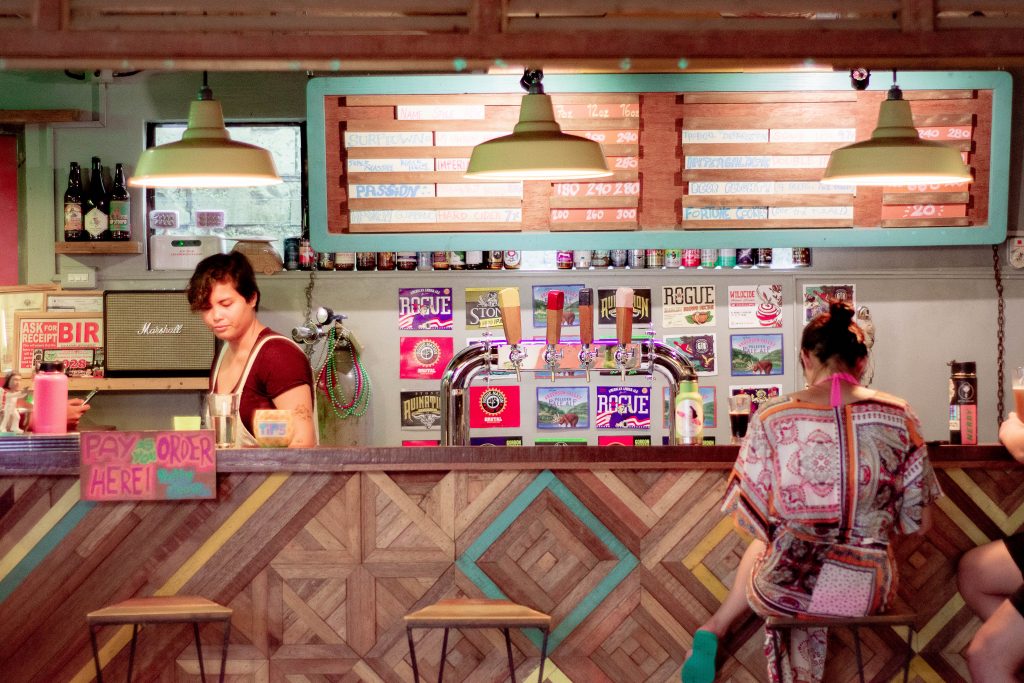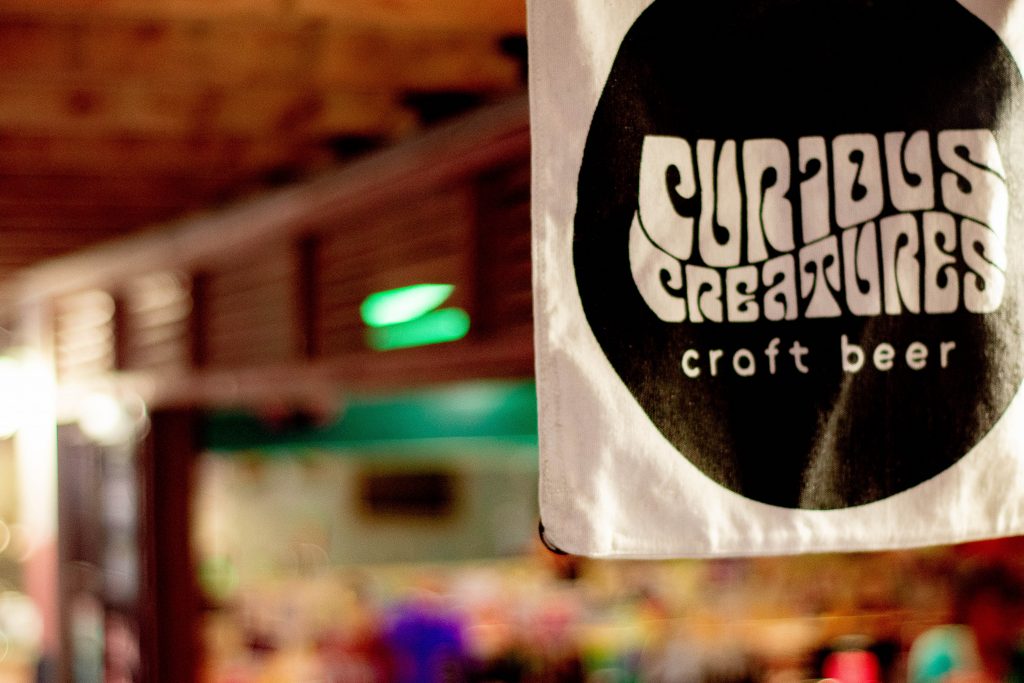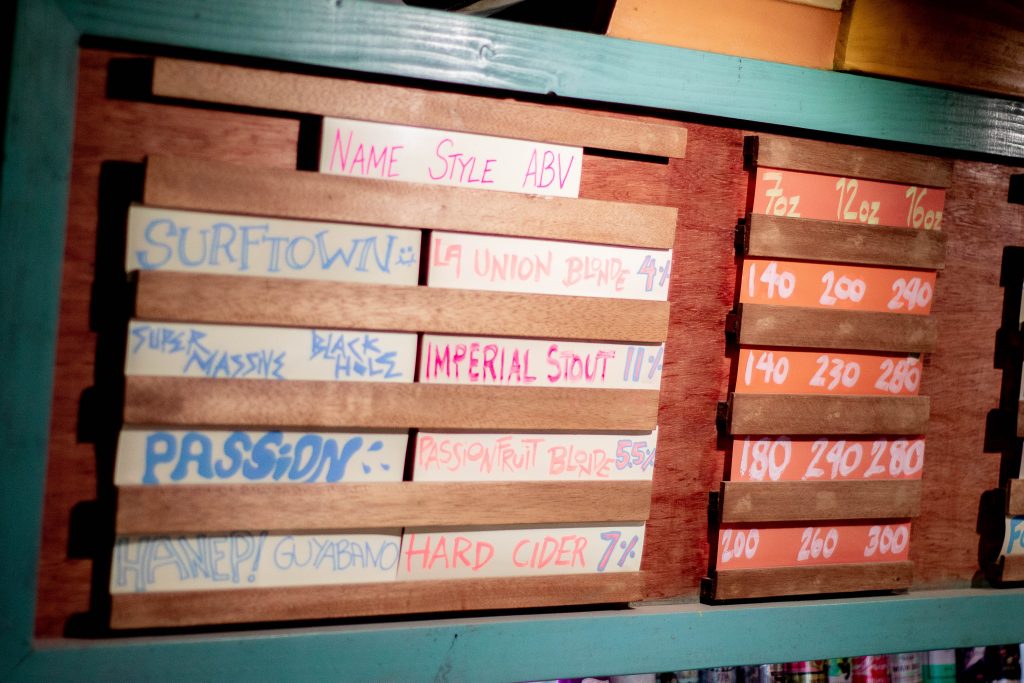
It almost seems like muscle memory for a weekend in La Union to be crazy. It starts to get good on a Thursday, when some of the bars and other businesses open, then the Manileños come on a Saturday morning before driving back to the city on a Sunday. Roads are packed and the streets turn into parking lots.
With the ensuing Manila lockdown, a smaller crowd is noticed in La Union. The weekend is unrecognizable from a weekday when all the visitors have gone back to the capital. Coming from an outsider, La Union’s identity is linked to crowds and the nightlife. But having stayed for more than a month, it made sense to me that it’s the thoughtful businesses and its creative population that defines the La Union lifestyle. As soon as everything closed, it was hard to stay while being surrounded by so many establishments you once enjoyed.

One of the establishments that grew on me has to be the Curious Creatures Taproom. Amidst all the wild–from 5-minute drinks and 80’s music–the taproom offers a spot for podcasts and design conversations, where on some weekday nights we partake in a glass or more of beer, despite not being a big beer drinker myself. This is most likely because I, like many of us, am so used to commercial beer, which I must boldly say is far from what the world of craft beer has to offer.
Right before the closure of stores, we managed to catch Mariane Pontejos at her post at the taproom to chat about what Curious Creatures means to La Union and the whole of craft brewing. Mars, as she is called, along with Claudine Lanzona and Chip Vega, opened the taproom in hopes of sharing their passion for craft beer in the surf town and hopefully introduce a culture of beer post-surf or sunset sessions.

“Claude got me into craft beer. Back then in college, I wasn’t interested in beer because my experience then was mostly with commercial beer.” Mars and Claude started to work for Chip at CraftPoint Brewing Co., a microbrewery in the metro known for their merging of art and craft beer and labels with specific serving suggestions. This is when Mars found herself deeply immersed in the ‘craft’ which soon after became a livelihood as Chip offered her and Claude a partnership for a space in La Union.
Mars and Claude were tasked to conceptualize the branding which proved to be both toiling and easy at the same time as their interests intertwined. “When it comes to the name, we were just so tired of thinking of a name, and then it came up. And it made sense because we really wanted it to be for people who are willing to explore the world of craft beer and an invitation to be open to flavors and new experiences.”
“We wanted to advocate beer education, and drinking good craft beer, and start that culture here,” Mars explains about the mission that came along with the name.
The reception, Mars shares, was slow when they opened in 2017. Perhaps it wasn’t until 2018 when Boracay closed, that La Union gained larger foot traffic. But she also attributes it to the novelty that comes with introducing something different from commercial beer. “People couldn’t grasp the idea of craft beer yet. People couldn’t understand why the price was so expensive. It was a lot of educating and that’s why we let them taste the beer first so they know what they’re getting, they know what it will taste like.”
Incidentally, as we talked, a couple came to the taproom and asked for a mojito. Mars explained they were not serving cocktails but beer, but the curious creatures did not leave right away and were eager to know what Mars can offer. “What do you feel like having? Do you want something fruity?” Mars asked and consequently offered them a shot of the beer to which they got a 16oz glass of the drink, sipping while the sun set.

Soon after they opened, two more craft beer spots opened along the Urbiztondo strip and it became hard for Claude and Chip to find somebody to man the taproom. Mars took this opportunity to relocate herself to La Union.
Perhaps Mars’ presence also complements the whole space, as she herself seems to possess the qualities of an educator. From settling the debate whether canned beer tastes better than bottled beer (which thanks to the opaque quality of the aluminum can that prevents the flavors from deteriorating, we have a winner), to what podcasts she recommends when it comes to design. It comes naturally for her to start talking about every beer at her disposal, what prints are displayed in the store, and an occasional dive into art and design.
These interests reflect not just in discussions, but in the taproom itself. Look down and the floor will stare back with its trippy eyes. The shelves are adorned with cans and bottles of craft beer Mars has collected over her travels. Claude and Mars had full autonomy on what they wanted the space to be like as well, so it wasn’t much of a discussion when it came to turning the space into a small art haven. It wasn’t as intentional as getting people to create for them, but most of what is in there are prints given to them, artworks created on the spot, or muralist-friends offering to do something for the space when they’re in town.
“We’ve always wanted to put art in it. Because this is also a reflection of me and Claude, what our interests are, and how we value community.”
Mariane Pontejos
With their love for beer and the hopes to serve a post-surf drink, they created a brew which catered to that and one that serves as an ode to La Union. “Blonde Ale Surftown”, which was served in bottles and later offered in cans, is light and perfect for an easy laidback afternoon. “We wanted it to be for La Union. It’s also important that it was light because it served as a gateway beer. People start from that and then eventually if they like it they progress to other flavors in the spectrum.”
When talking about these flavors, Mars recalls the peculiar drinks they served before, like the Durian cider from Elias which she describes as savory, or Mayari brewed by Craftpoint, a garden ale made from chamomile and lavender that made it pink but had a high ABV.
Mars, true to her interest in the flavors of beer, would really prioritize how a beer’s quality is over its sellability–rooting for beers according to their interesting flavors. “You just have to really explain to people what they are getting. Like sours, you really have to tell them it’s gonna taste like that and it’s not rotten or anything.”
“I know craft beer drinkers are really adventurous, so I also recommend other places. And eventually, we want to be able to offer that; a more varied tap selection, more creative flavors.”
Mars also says she hopes to offer more sours and stouts, which she personally likes. It was also important for her to try to see what’s local because when somebody travels, they really look into that just like she does.

“Craft beer is so creative, there are so many variables you can work with. It’s really a creative pursuit and there are no shortcuts. When people are really passionate about beer, there are no shortcuts.” Unlike most practices, you don’t just add sugar to taste, or perhaps in the world of beer, rice. It really comes down to how you handle the ingredients.
“That’s the fun of it. Exploring what you can do with those four ingredients. And we’re always trying to push the boundaries of beer. Craft beer is not what beer should be, but what beer can be.”

With only a few more days until this lockdown is over, let’s not hope for an extension. There is no telling how many embraces will be shared in the aftermath, but surely, whatever Mars has on tap, I’m getting myself a glass or two while watching the setting sun amongst the people sharing the same warmth.
Photos by Matt Carpio
Follow CLAVEL on Facebook and Instagram for news, culture, and more.








